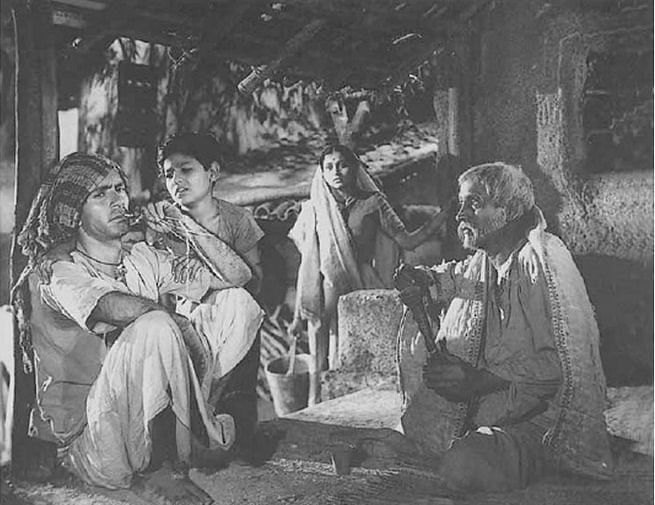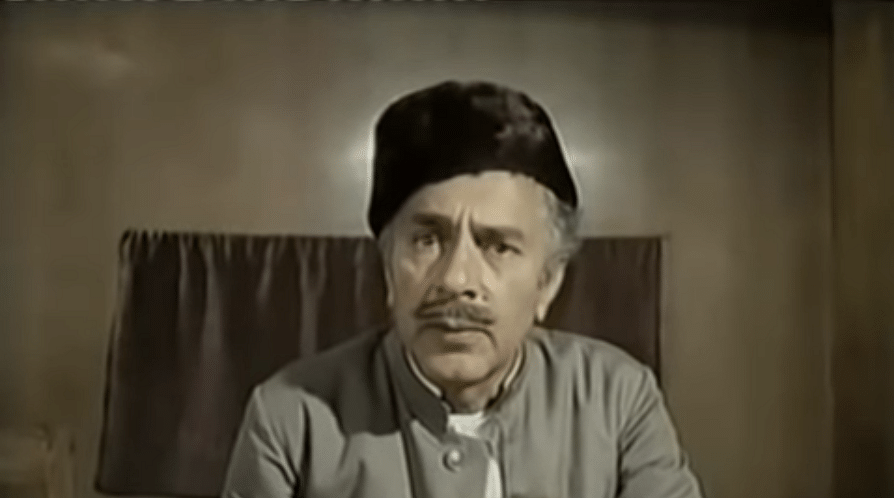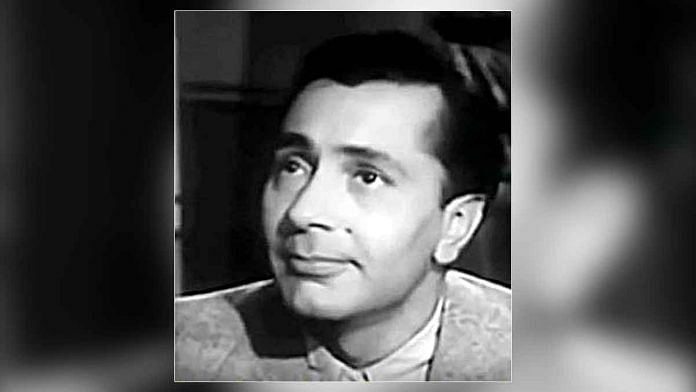New Delhi: The period between 1940 and 1960 is considered the golden era of Hindi films that was marked by meaningful cinema and iconic performances. The era produced some of Hindi films’ biggest names. One of them was Balraj Sahni.
Known to be a true gentleman both on and off camera, Sahni had the rare quality of leaving a lasting impression on people. He had an illustrious career in which he acted in over 80 films and also wrote six books. Some of his most notable movies were Do Bigha Zamin, Kabuliwala, Waqt and Garam Hawa.
On his 106th birth anniversary on 1 May, ThePrint recounts the life of the man who helped define the golden era of Hindi cinema.
Early life
Born in Rawalpindi in undivided India in 1913, Sahni was an academic. He held two Masters’ degrees — one in English and the other in Hindi.
In 1936, Sahni married Damayanti and settled in Santiniketan, West Bengal, where he took up the job of an English and Hindi professor. The couple were theatre enthusiasts and actively participated in plays produced by famous theatre group — Indian People’s Theatre Association. This is where, Sahni first got bitten by the acting bug, and a few years later, by the 1940s, he found himself in Mumbai looking for roles in Hindi films. His debut in films began with Insaaf and Dharti ke Laal in 1946, while Damayanti also made her debut in the same year in Door Chalein.
Do Bigha Zamin
It wasn’t until Do Bigha Zamin (1953) that Sahni got noticed and appreciated for his acting ability. The rest, as they say, is history.
Directed by Bimal Roy, Do Bigha Zamin was an openly socialist film and is considered to be one of those movies that initiated the parallel cinema movement.
Sahni played the role of a poor farmer who was forced to migrate to Calcutta (now Kolkata) to become a rickshaw-puller to make enough money to save his land from the clutches of a rich landlord.
As preparation for the role, Sahni would go to Jogeshwari in south Bombay, and observe the bhayyas (farmers) there, who had migrated to the city for work.
He wrote about it in great detail in his autobiography Balraj Sahni: An Autobiography —
“Jogeshwari is a sprawling suburb of Bombay, a few miles outside the city. It is the home of Bhayyas from Bihar and Uttar Pradesh, whose main occupation is tending herds of buffaloes, which they maintain there. From the day following my Interview with Bimal Roy, I took to visiting their bus tees. I would go there and watch them minutely — their way of working, the way they walked, squatted on the ground to eat, their accent, their dress, everything!
“I would make a mental note of all the traits and peculiarities of those people and try to imagine myself as one of them… Whatever success I could make of my role in Do Bigha Zamin is thus the result of this study I had made of the way of life of the Bhayyas,” he wrote.
The film went on to become the first Hindi film to win a Filmfare Best Movie award as well as the first Indian film to win the International Prize at the Cannes Film Festival in 1954.
Sahni’s steady stream of notable performances never seemed to stop since Do Bigha Zamin.

Seema (1955), Sone Ki Chidiya (1958), Sutta Bazaar (1959), Bhabhi Ki Chudiyaan (1961), Kathputli (1957), Lajwanti (1958), and Ghar Sansaar (1958) were some of Sahni’s biggest hits.
He paired opposite every leading lady at that time, and also acted in some romantic comedies. One of his most famous cinematic moments was the song Ae Meri Zohra Jabeen from the blockbuster hit Waqt — it is still considered a classic.
His other biggest hit was also produced by Roy — 1961’s Kabuliwala. Based on the famous Rabindranath Tagore story, Sahni played the titular lead and brought the enigmatic character alive on screen. His son, Parikshit Sahni, who also went on to become a famous actor and director, remembers this time with fondness.
In an interview about his father with The Quint, Parikshit recounted how his parents struggled as actors in the beginning, and to shield him from it (and the ongoing freedom struggle and Partition), they sent him to boarding school. He also recalled the time when Kabuliwala was released, and said that life for the Sahni family improved after the movie released and they even owned a motorcycle then.
Sahni, the activist and writer
Apart from films, Sahni had two other passions — politics and writing. He was an active member of the freedom struggle and worked by Mahatma Gandhi’s side for a while before he joined the communist cause in the early 1940s.
A shrewd viewer, Sahni would also notice that his choice of films was always Left-leaning and more often than not, had a strong social message. After his wife’s untimely death in 1947, he took to social causes even more.
At that time, Bengal was experiencing the worst famine and Sahni strived to tell the layman’s tale through cinema. This was the reason behind his earlier hits like Do Bigha Zamin and Dharti ke Laal. He would actively participate in campaigning for human rights and also criticised the government.
With the help of P.K. Vasudevan Nair (who went on to become Kerala’s chief minister in 1978), Sahni formed the All India Youth Federation, the youth wing of the Communist Party of India.
Sahni wrote non-fiction mostly in Punjabi about his travels in Pakistan and Russia — Mera Pakistani Safarnama, Mera Russi Safarnama — as well as on socio-political themes (Kamey, Ek Safar Ek Daastaan, Gair Jazbaati Dairy).
His love for language soon had his name added to the list of renowned Punjabi authors. He also regularly contributed poems and short stories to the Punjabi magazine Preetlari as well as The National Herald. He even dabbled in screenplay-writing – he wrote the script of the Dev Anand-starrer Baazi in 1951.
Garam Hawa
Perhaps his most famous role was in his final film — Garam Hawa (1973) directed by M.S. Sathyu, which gave a fresh perspective to Partition.

Sahni played a Muslim, who is caught between moving to Pakistan or staying back in India. The film is considered one of the finest movies made on Partition as it showed the plight of Muslims in a volatile land in a manner never seen before.
Unfortunately, Sahni never saw his last and most revered film as he passed away the day after he finished dubbing for the film on 13 April 1973.
Even as he breathed his last, Sahni made audiences think as his last ever recorded words were: “Insaan kab tak akela jee sakta hai?”
Also read: Yash Chopra’s Waqt was the dazzling Kabhi Khushi Kabhie Gham of its time




There is a story about Balraj Sahni – what an incredibly handsome man – shooting for a film in Calcutta, playing the role of a man pulling a rickshaw. All through that hot, humid day, he toiled, sustained by the thought of the cold beer that awaited him. Then it turned out to be a dry day, the liquor shops were shut … No way, he told the Director, I want my beer, now, got a shop opened and had his wish granted.
Do Bigha Zameen – trust me to read the column after posting my comment …